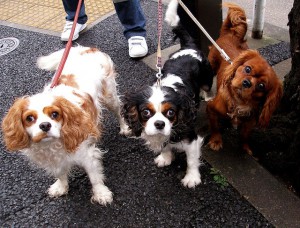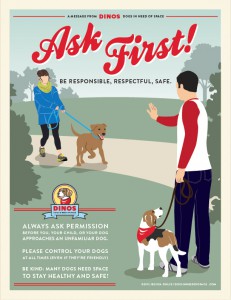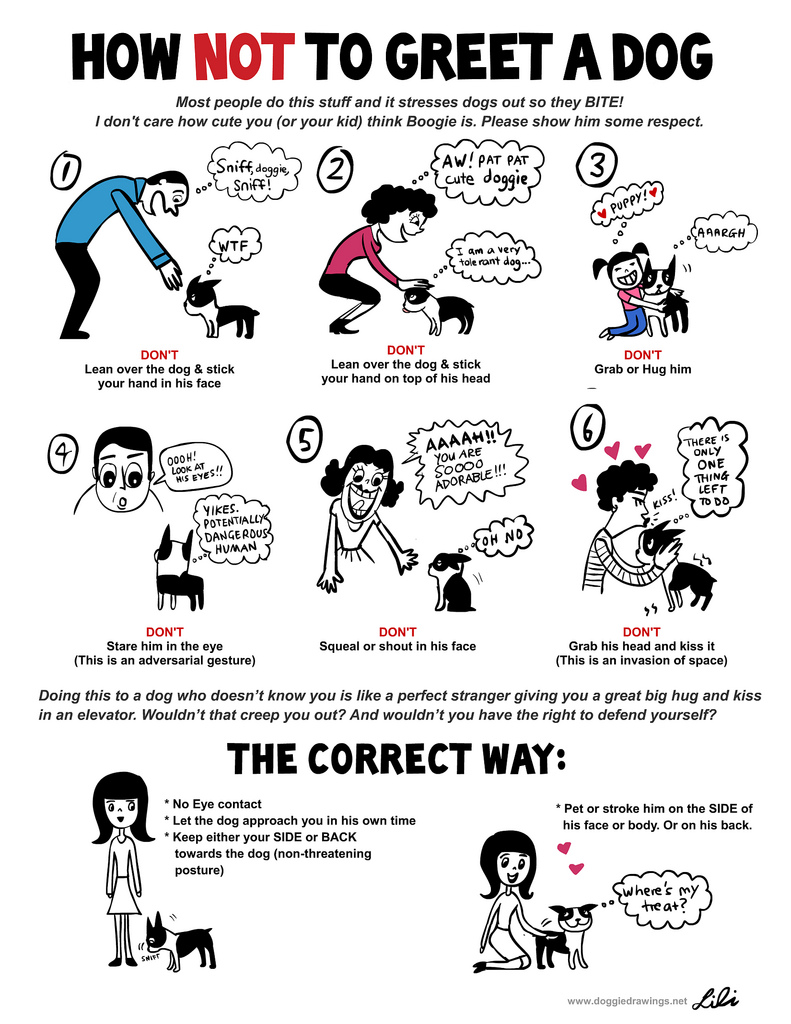How to book clients you love, get better outcomes, and make more money by reimagining your relationship with your clients.
Every time that I scroll through Facebook, I read stories of trainers’ burn out, imposter syndrome, frustration with clients, and financial struggles. It’s sad to see so many people so frustrated doing a job that brings me so much joy. It’s even sadder to see really good trainers leave the industry. Many factors contribute to high levels of dissatisfaction, but the biggest source seems to be our clients. I’ve seen the same complaints over and over for years:
- Clients won’t commit to doing the work that it takes to help their dogs.
- Clients don’t comply with our recommendations.
- Clients make great progress only to drop off after a few lessons
- Clients don’t respect boundaries and always want more.
- Clients choose trainers who use punitive methods and promise quick fixes over positive trainers.
Many of us swing back and forth between blaming our clients for these problems and blaming ourselves. It’s not our clients’ fault. It’s not our fault as individuals either. The fault lies with huge blind spots in our professional culture that keep us from seeing what our clients need. It may not be our fault, but as the experts taking people’s money for our services, it’s our responsibility to fix it. Fortunately, other professions have faced very similar blind spots and developed systems to overcome them. We can all enjoy our clients a lot more, have better training outcomes, and make more money if we follow their lead.
Dog Training’s Blind Spot
Dog training culture fundamentally misunderstands the nature of the service we provide. This meme illustrates the problem perfectly.
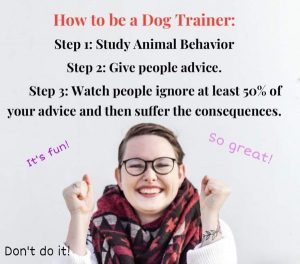
Sure, it’s a joke, but it reflects what most of us think we need to be good trainers: expertise in dog behavior. That’s how it works for most services. When we hire someone to fix our car, build a deck, or take out our appendix; we know what we want and what to expect from the process. The work has a clear beginning and end. The people doing the work need very little from us to successfully complete it. Those realties mean that one can study just auto mechanics, carpentry, or medicine/surgery and then go out and do good work.
Dog training is different. Most of our clients have no clue what they really need, what’s possible, or what to expect from the process. We have to teach them what’s possible, and that often means rethinking their relationship with a cherished family member. We also need them to do most of the work and to get their entire family on the same page. That’s asking an awful lot of our clients. We need to ask more of ourselves to help them get there. Knowing dogs isn’t nearly enough. We need training systems informed by a deep understanding of human learning, communication, and motivation.
A blind spot for the client’s experience isn’t unique to dog trainers. We see it whenever highly educated specialists provide services to laypeople whose diverse needs, resources, and habits have a big impact on whether or not the work succeeds. Experts tend to think that we have all the answers if only or clients would listen. It’s not that simple. Experts never have all the answers in fields like ours.
Our biggest blind spot is that we think we know what our clients need. We don’t. Most trainers teach our clients to do what we would do. That’s not what they need. Dogs and training play vastly different roles in our lives than in most of theirs. Training’s much more than a job for most of us. It’s our hobby and our passion too. That makes us terrible role models for our clients. They don’t want to learn dog training. They just want to enjoy life with their dogs, and that usually looks a lot different to them than it does to us.
Every family has different experiences, knowledge, values, capabilities and resources that determine what they need from us, what they can realistically contribute to the process, and what success looks like to them. We need to understand all of that. It plays as important a role in shaping good training plans as analyzing the dog’s environment, learning history, genetics, and emotions. We as a community, however, spend exceedingly little time talking about that stuff. That needs to change.
Clients get confused and frustrated when we skip the work of understanding their needs and helping them understand how we can help meet them. They often wind up bailing out of processes that they don’t understand and that often aren’t practical for them. When that happens, we tend to blame our clients’ “non-compliance” and they tend to blame us for not knowing our stuff. Everyone winds up confused, frustrated, and maybe even resentful. Structured processes that facilitate mutual understanding can solve this problem.
Examples of Doing It Better
I’m far from the first person to point out dog training’s blind spot for our clients’ experience, but I have a unique perspective on the problem. I’ve had 2 previous careers where I facilitated collaboration between experts and the people they serve. Both fields faced similar blind spots. My work in both of them centered on changing cultures and developing processes that helped experts better understand and serve our clients. We need similar changes in dog training. Well-structured processes can take a lot of the mystery and frustration out of client relations.
When I studied international development, I constantly encountered examples of Western experts giving truly terrible advice to African subsistence farmers because they didn’t understand the local climate, culture, history, and economics. They would fly into a capital city, do a little research in the library, and then go tell farmers to adopt Western industrial farming practices. It was a lot like dog trainers spending 30 minutes taking a history and then telling clients to train the way that we do. When farmers didn’t “comply” (my least favorite word in the industry), the experts seldom wondered what might be wrong with their advice. They blamed it on the laziness, ignorance, or superstition of the people that they were very sincerely trying to help, just like many dog trainers. The experts didn’t know what they didn’t know, and didn’t particularly care to find out.
In the 90s, a movement developed to better account for the big picture in development. Interdisciplinary teams did ground work before a project began to help assess local needs before specialists arrived. They took the radical step of asking local people what they needed and created processes to give locals a much greater role in planning and prioritizing projects. Many experts resisted. They viewed the preliminary work the same way that many of us view talking to clients before they book a program or consults that don’t get right to training: as a waste of time. When they started doing it, however, the results were dramatic. It led to more practical, sustainable, impactful, and less corrupt projects that accomplished more with less money.
I witnessed a similar dynamic working in IT during the dot com boom. Programmers would sit down for a few meetings with the suits about what new systems were going to look like, and then just start coding. Nobody wanted to “waste” too much time and money on defining the problem before getting down to doing the “real” work. Disaster often ensued. Countless 7 and 8 figure IT projects wound up being complete busts that customers couldn’t use because the programmers didn’t actually understand what the suits needed and the suits didn’t understand how programming worked.
Again, the problem was the system, not the individuals. The IT industry recognized the problem and embraced wonderful systems for gathering customers’ requirements and making sure that the end product met those needs. It turns out that investing the time at the beginning of any complex project to get everyone to agree on a definition of the problem and and how to solve it saves a ton of time, money, and frustration. Dog training is no different.
A Collaborative Goal-Oriented Model of Behavior Consulting
I’ve spent the last 12 years working to apply the lessons of IT and development work to dog training. My wife, our team, and I have created processes that help us to truly understand our clients’ needs, properly educate them on what’s possible, and get them to buy into our training plans. It works. Our clients commit to the amount of training that they need up front. They almost always complete their programs. They virtually never question our methods or expertise. We seldom have to enforce boundaries because they’re built into the system.
We still struggle to motivate some clients to do their homework, but they seldom blame us when that happens. It has been a commercial success too. In a city filled with franchises and punitive trainers promising quick fixes, we outcompete them all to keep 9 trainers busy primarily through previous client and veterinary referrals.
An ethos of service and collaboration guides our structured sales and training processes. Understanding and solving the client’s problems drives everything. We work in partnership with them to solve their problems rather than telling them “the right way” to do things. That doesn’t mean that we do whatever a client says or wants. We very much adhere to our ethics and our style of training. We just take some time to help a client truly understand how we could help them in order to determine whether we’re a good fit.
We have processes designed to help us understand clients’ needs, educate them on what’s possible, work together to set a plan, and keep it moving forward. It does take more time and effort up front. Many trainers recoil from that prospect, but it takes less time than you might think with a properly structured process. It’s a small price to pay for booking clients who share our ethics, respect our expertise, commit to and pay for the right-sized program up front, do their part, and honor our boundaries.
Our process has 4 key phases: Inquiry, Education, Goal-setting, and Assessment/Feedback. There aren’t always clear boundaries between the phases. It’s also not a linear sequence where you do 1, 2, 3, 4, and then you’re done. It’s an iterative process where we can revisit one or more phases throughout the training process.
Inquiry: What does the client need?
We want to know a lot about our clients as well as their dogs when they contact us. How many people live in the home? How old are their kids and how engaged are they with the dog? What’s their schedule like? What do they like to do with their dog? What dogs have they owned in the past? What training experience do they have? What are their pie-in-the-sky ideal goals for their dog’s behavior? What’s their budget? We use questions to drive the conversation and avoid getting trapped listening to long narratives.
The answers to these questions determine what sort of training program we suggest. Many trainers base their recommendations solely on the dog. Given the same dog, they suggest the same program for an active single 20-something with lots of free time and for a busy family with 4 young children. We pitch very different programs to those 2 clients because they have very different needs.
There are a lot of ways to get this information: emails, phone calls, questionnaires on your website, history forms, short in-person or virtual meet-and-greets, initial consults, etc. It’s all about structure. I seldom spend more than 15 minutes on the phone with a prospective client. If that’s not enough, my process allows me to steer them towards a paid consult to dig further into their case.
Clients want to know about us too. They want to know program details, what they can expect to achieve, what training methods we use, etc. There are lots of ways to provide this information too. For most of us, it starts on our website or Facebook page. Giving clients the information that they want online is critical, but most also want options to ask about their personal situation. The more we help clients understand what we do, the more likely we are to have a successful collaboration.
Any number of factors might stop a client from booking with us in the inquiry phase: price, scheduling, methods, or just a lack of rapport. We might also opt to refer them to someone else for a wide range of reasons. Either outcome is a good thing if the client wasn’t a good fit.
Education: Teach clients what we can offer
Once I know what a client wants and what they can contribute to the process; it’s time to educate them on what’s possible. I walk them through how what I learned in the inquiry will likely impact their training experience. I usually review more than one program with clients and try to paint as detailed a picture of what each might look like as I can. I go over what we will do, what we will need from them, what it usually looks like, what can go wrong, and how we’ll handle it if/when things go wrong.
Focusing on honest education takes all the yuckiness out of sales. My sales process is super low pressure. I might talk a client who needs basic obedience training through a $175 class, a $700 coaching package, a $1900 day training program, and a $2800 board and train program. Most of the time, I sincerely don’t care which one they choose. My goal is for them to make a truly informed choice where they understand what they’re getting into and can commit to what it demands of them.
Goal Setting: Creating a joint plan with everyone’s buy in
This one makes a lot of trainers nervous. Unscrupulous trainers who make ridiculous promises have made some trainers reluctant to talk about results at all. That does not help us compete with unethical trainers or to provide quality service. It requires a tremendous leap of faith to just hire someone at an hourly rate when they won’t tell you what you can hope to get out of it. People want solutions; not an open-ended commitment to learning a new skill.
Goals are at the absolute center of our process. In the inquiry phase, we find out what the client needs. In the education phase, we help them understand what it will take to get what they want. In the goal setting phase, we set specific objectives. It’s a collaborative process where we outline different strategies for reaching different goals and the trade-offs between each one. We give our clients choices and that gives them a sense of ownership over the training plan. It’s not just us telling them “the right way” and them “complying” with our advice. We create a plan together.
I try to only sell programs that will meet specific goals. Selling 4 sessions to someone who needs 8 demonstrates a lack of shared commitment to see the process through. That sets everyone up for failure. Clients are the experts on what they need from the dog, but we’re the experts on how to get there. If they won’t commit to a full program, then they’re not a good fit. Only booking clients who commit to do the work means that we make more money with fewer clients and less frustration.
We use training agreements written in plain English that describe our goals, our entire process, and clearly define everyone’s responsibilities. There’s no legalese. Our trainers write them and the style is friendly and explanatory. The agreements also describe how we will handle any difficulties meeting those goals. That leads to our final phase.
Assessment/Feedback: Keep making it better
A collaborative process acknowledges that no plan is perfect and creates a process for identifying and addressing problems. Building assessment and reevaluation into a structured process sets the expectation for struggles and adjustments. It sets the stage for friendly problem-solving conversations. Nobody needs to blame or judge anyone else. We’re just working together within a mutually agreed upon framework to solve complex sometimes unpredictable problems. Clients tend to be extremely understanding and flexible when problems are identified and discussed early and regularly.
How and when we assess depends on the type of service. The first few days of board and train, for example, involve significant assessment. We commit to tell clients by then if we expect big problems meeting any goals. If that happens, we give them choices. We might set a more modest goal, drop less important goals, extend the training period, or abort training and give the client a pro-rated refund. If we don’t’ catch a big problem early, we take responsibility and we usually do extra work for free.
For coaching plans, assessment happens at each lesson. We take some time to explicitly discuss whether we are on track to meet our goals. If we aren’t, we try to determine why. Is the dog harder to train than we expected? Do the clients have less time than they thought to practice? Is the family struggling to consistently follow management rules?
No matter how you do it, the important thing is that everyone knows that we might encounter bumps in the road and that we have a plan for handling them.
A Work in Progress:
Just like our training plans, our client collaboration process is always changing. When it was just me and my wife Mel, it was easy to do all of it ourselves. When we started hiring trainers, it got a little trickier. When COVID hit, our processes suffered too. We had more unhappy clients in 18 months than we would normally expect in 5 years. Many factors contributed to the problems. Fortunately, I didn’t blame the clients, my staff, or myself. I didn’t feel helpless. I just saw a need to review and revise our processes. Focusing on the process takes so much of the emotion out of it. It’s just another interesting problem to be solved, and that’s why I love my job.


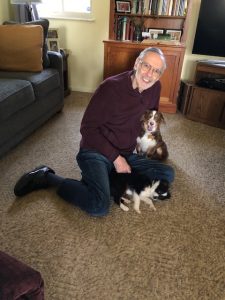
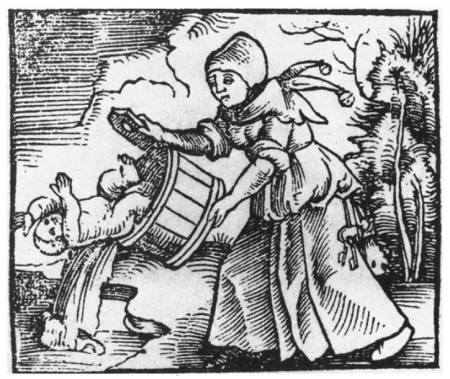
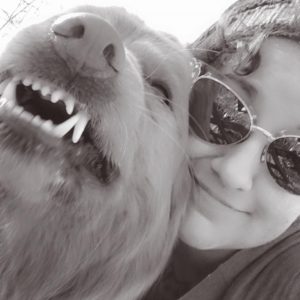
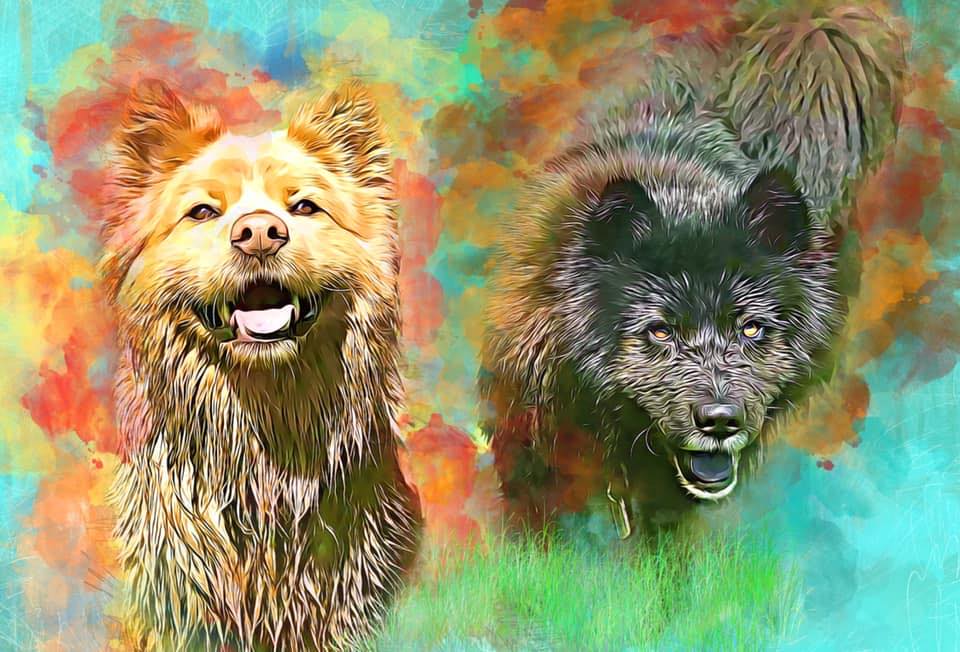
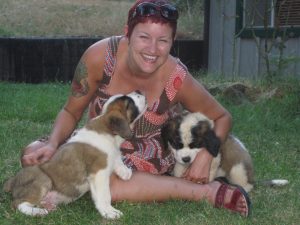
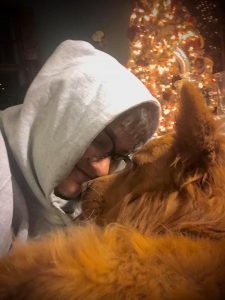
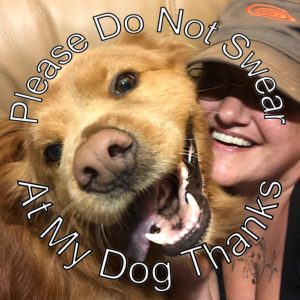


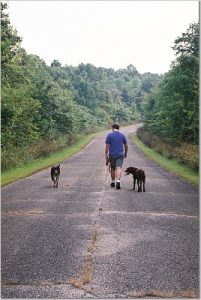
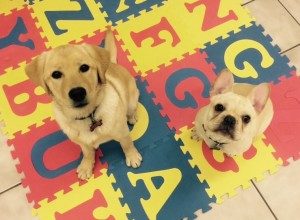 Did you know that the period of 7-16 weeks of age is crucial to your puppy’s proper development? Extensive socialization during this period may be the most important thing you can do for your puppy!
Did you know that the period of 7-16 weeks of age is crucial to your puppy’s proper development? Extensive socialization during this period may be the most important thing you can do for your puppy! One of the trickiest questions that I get from my dog training clients has little to do with dog training, but people are asking me more and more often: “When should I spay or neuter my dog?” My answer generally boils down to “It’s complicated. Talk to your vet. Do some research.” It’s not just a coincidence that more and more people are asking this question. Recent research into the health effects of early spay neuter has reopened debate about the long-standing consensus in favor of early spay/neuter among animal professionals in the US. Some of these studies suggest that early spay and neuter can have a variety of negative impacts on our dogs’ health, but the issue is far from settled.
One of the trickiest questions that I get from my dog training clients has little to do with dog training, but people are asking me more and more often: “When should I spay or neuter my dog?” My answer generally boils down to “It’s complicated. Talk to your vet. Do some research.” It’s not just a coincidence that more and more people are asking this question. Recent research into the health effects of early spay neuter has reopened debate about the long-standing consensus in favor of early spay/neuter among animal professionals in the US. Some of these studies suggest that early spay and neuter can have a variety of negative impacts on our dogs’ health, but the issue is far from settled.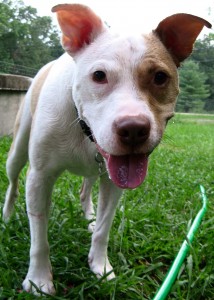 Why does my dog ignore me?Does your dog ignore you when you call him to come or give him a command? “Why does my dog ignore me?” is one of the most common questions I hear from week 1 students in my dog obedience training classes. Some of them take being ignored as a challenge to their authority. Others get their feelings hurt and worry that their dog doesn’t love them. In reality, most people whose dogs ignore them have unwittingly trained them to do so.
Why does my dog ignore me?Does your dog ignore you when you call him to come or give him a command? “Why does my dog ignore me?” is one of the most common questions I hear from week 1 students in my dog obedience training classes. Some of them take being ignored as a challenge to their authority. Others get their feelings hurt and worry that their dog doesn’t love them. In reality, most people whose dogs ignore them have unwittingly trained them to do so.